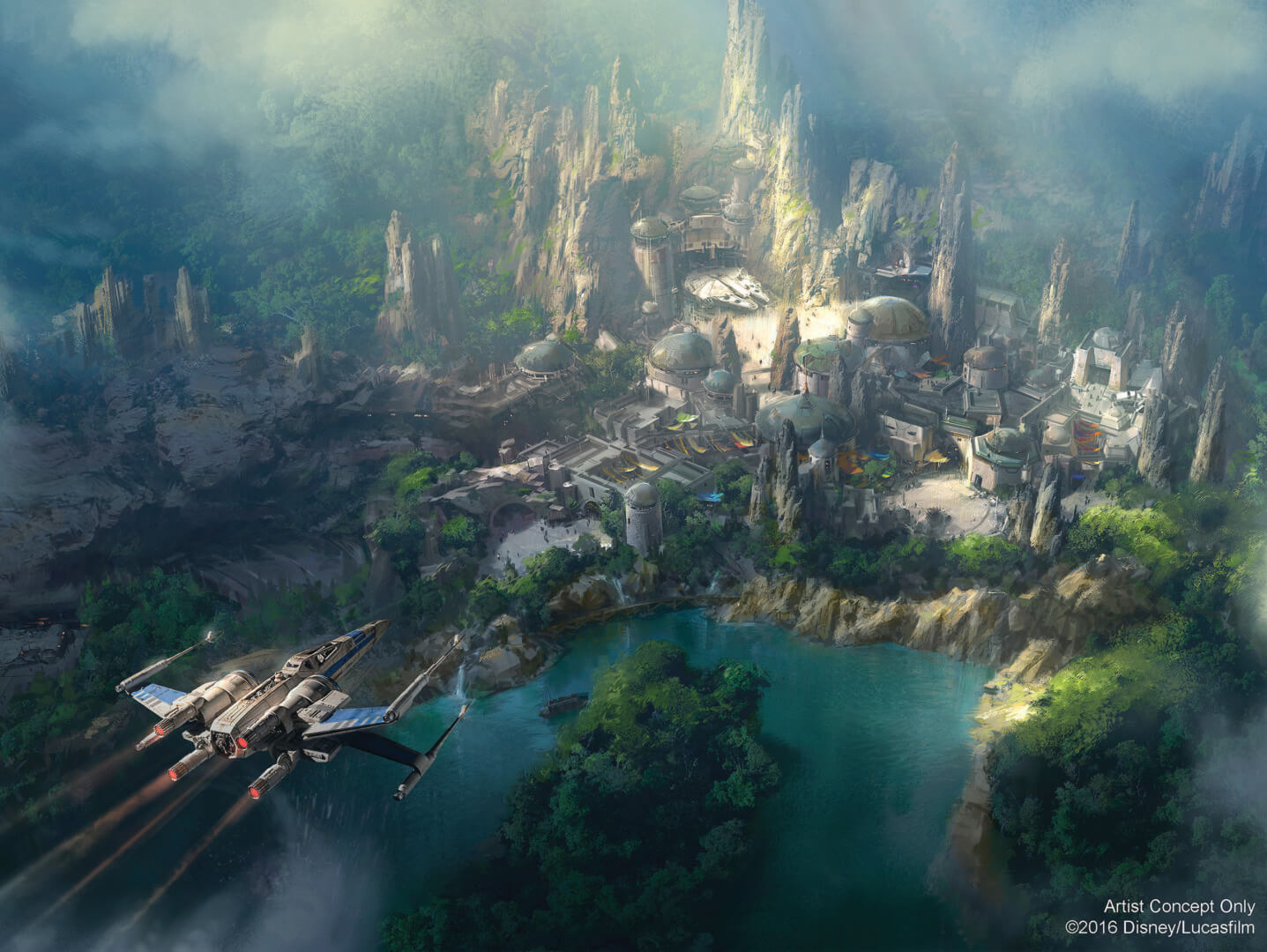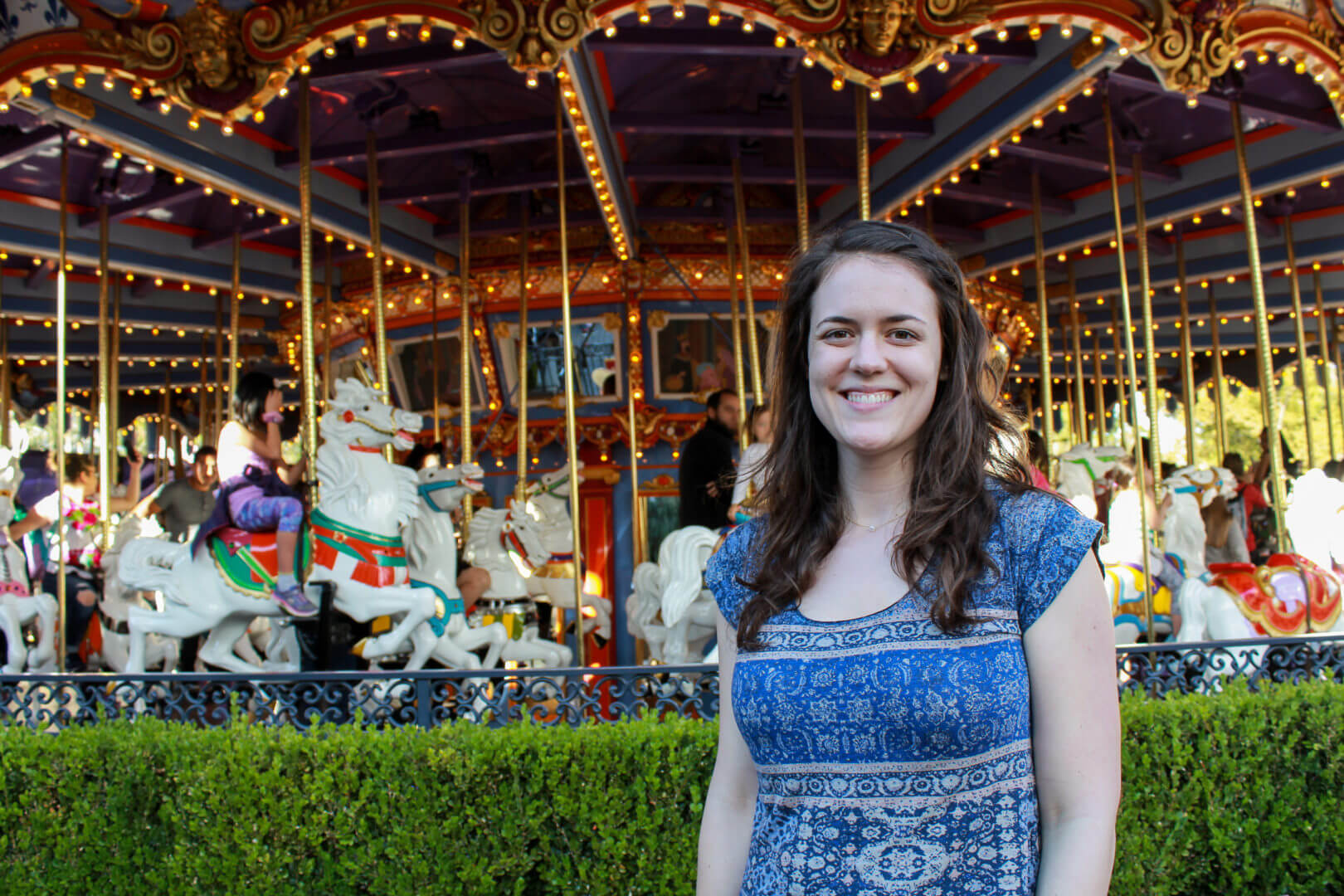The Force Awakens in Anaheim. And Orlando.
Andrea Lawler spends her days on the planet Batuu, aiding galactic space warfare.
She doesn’t necessarily care who wins the struggle between the Resistance and the First Order in Episode IX. But she does care about placing visitors, known as guests, right in the middle of it.
“We’re focused on positive, authentic experiences,” Lawler said.
Lawler, B.S. EE ’14, is a Walt Disney Imagineer. As a ride control software engineer, she works on a team that designs, writes and tests the safety-critical software that controls the physical motion of all theme park rides, including the vehicles that will transport guests inside a laser-riddled firefight.
Her current project, “Star Wars: Galaxy’s Edge,” is a sprawling new themed land at both Disneyland, in Anaheim, California, as well as Disney’s Hollywood Studios in Orlando, Florida. Opening in 2019, it will usher park-goers to a new planet, Batuu, on the fringes of the known Star Wars galaxy. For example, one of the land’s two new signature rides “allows guests to step aboard the Millennium Falcon and actually pilot the fastest ship in the galaxy.”

This space warfare, she said, must “be extremely reliable.” It must run, on average, 18 hours a day, 365 days a year. The vehicle must be exciting but also safe and synchronized to the attraction’s numerous audiovisual cues. That means Lawler embraces “key principles of applied physics, hardware and mechanical engineering to understand how to develop this control software,” she explained.
In many ways, Lawler may be the prototypical USC Viterbi engineer. She graduated from USC with dual degrees in screenwriting and electrical engineering, with an emphasis in computer engineering and controls and robotics. Her bookshelves display titles ranging from “The Design of Everyday Objects,” by Don Norman, and “The Mythical Man-Month,” by Fred Brooks, to “Lean In,” by Sheryl Sandberg, and “Your Screenplay Sucks!” by William Akers.
Despite the fact that she grew up 40 miles away from Anaheim in Rancho Palos Verdes — and her parents had their first date at Disneyland — as a kid Lawler didn’t know that Imagineering was an actual job.
“I never stopped to think that there would be a group of people who would design those parks, let alone the hotels and cruise ships too,” Lawler said. “It wasn’t until I was in college that I discovered Imagineering and its role within The Walt Disney Company.”
With interests in engineering and cinema, Lawler said, “I dreamed of being able to fuse those two disciplines into one career — namely, to apply the key principles of making a character feel real on the page with the technical skills to make a physical robotic character come alive. Serendipitously, that research led me to discover Imagineering. And when I heard that Imagineers have a love for story and focus on blending it with technical know-how, I knew that working at Imagineering, and being part of that blend, was my dream job.”
As a kid, Lawler loved “puzzles and brain teasers that involve wordplay, arithmetic or both,” she said. Her favorite: “What makes this number unique – 8,549,176,320?” She also loved movies like “The Shawshank Redemption” and the films of the late 1980s to early ’90s Disney renaissance.
She’s found interesting ways to combine those loves. Robots, for example. Lawler worked as an undergraduate in the Interaction Lab of Professor Maja Matarić, a pioneer in socially assistive robots that aid children with autism or stroke victims. As an Imagineer, Lawler has written creative dialogue for Disney’s interactive robots, drawing on her USC Viterbi research and knowing the limitations these machines would face in a dynamic theme park environment.
“I have to keep in mind that the character might have trouble distinguishing what a guest says or does, even though light and sound variances are accommodated as much as possible by our systems,” she explained. “I need to craft dialogue and interaction arcs that minimize the likelihood that the character could misunderstand the guest in any form.”
Similarly, her engineering training, which prizes efficiency, must negotiate with her entertainment training. One of the key responsibilities of Imagineering’s ride engineers is synchronizing vehicle motion to meet the creative timing requirements of a particular show sequence so that each guest feels like “they’re uniquely experiencing the attraction,” she said.
“It’s amazing how often I’m told, and now have seen, that art inspires science, and vice versa,” said Lawler.
She also finds inspiration in “Mickey’s 10 Commandments,” written by the late Disney legend Marty Sklar, the Disney Imagineering covenants, particularly number two: “Wear your guest’s shoes … experience your facility as visitors as often as possible.”
Admittedly, being forced to revisit “the happiest place on Earth” is not one of the more onerous commandments. Lawler would be the first to admit that Imagineers, after all, “are still children at heart.”





